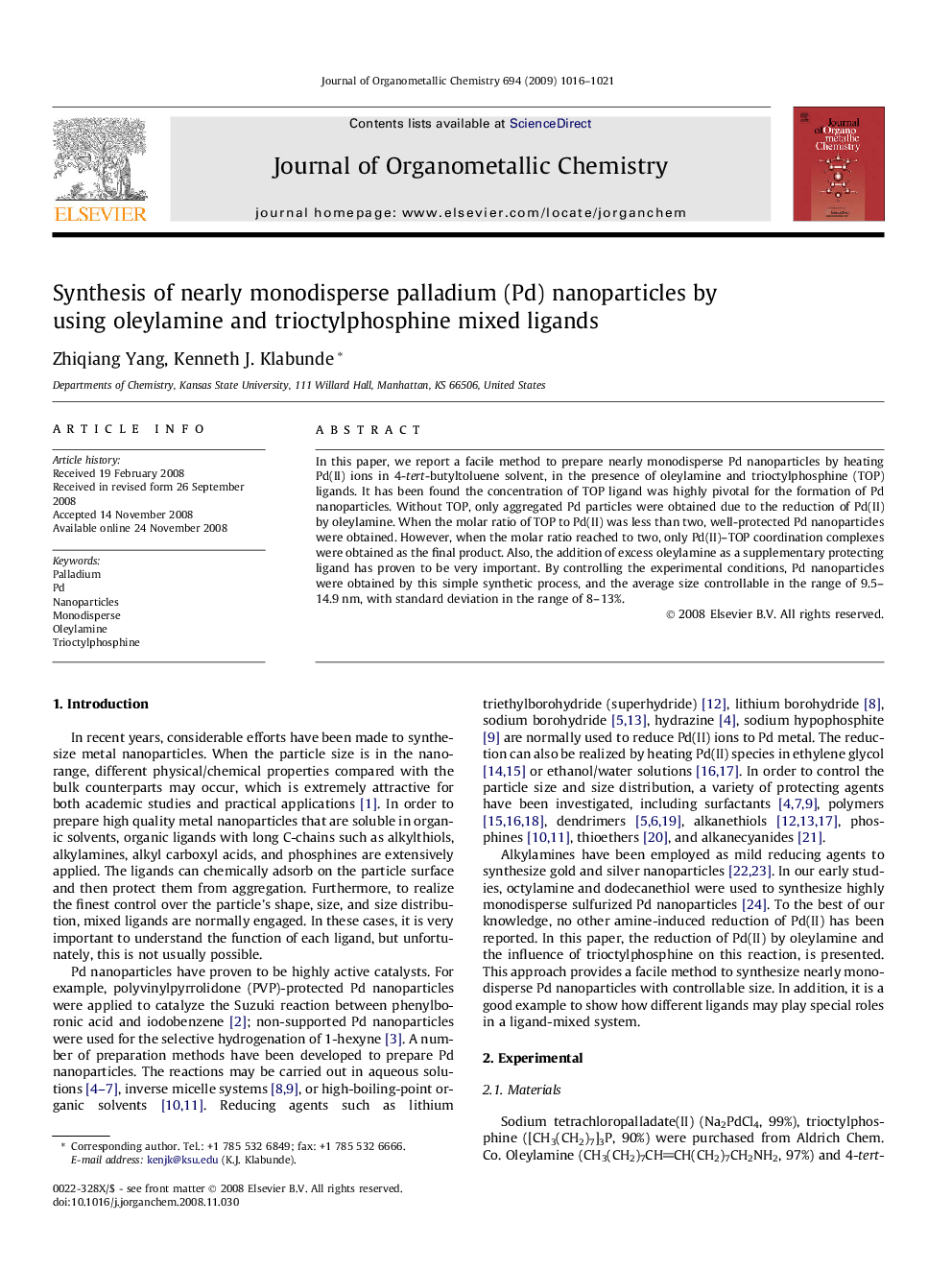| Article ID | Journal | Published Year | Pages | File Type |
|---|---|---|---|---|
| 1324647 | Journal of Organometallic Chemistry | 2009 | 6 Pages |
In this paper, we report a facile method to prepare nearly monodisperse Pd nanoparticles by heating Pd(II) ions in 4-tert-butyltoluene solvent, in the presence of oleylamine and trioctylphosphine (TOP) ligands. It has been found the concentration of TOP ligand was highly pivotal for the formation of Pd nanoparticles. Without TOP, only aggregated Pd particles were obtained due to the reduction of Pd(II) by oleylamine. When the molar ratio of TOP to Pd(II) was less than two, well-protected Pd nanoparticles were obtained. However, when the molar ratio reached to two, only Pd(II)–TOP coordination complexes were obtained as the final product. Also, the addition of excess oleylamine as a supplementary protecting ligand has proven to be very important. By controlling the experimental conditions, Pd nanoparticles were obtained by this simple synthetic process, and the average size controllable in the range of 9.5–14.9 nm, with standard deviation in the range of 8–13%.
Graphical abstractDifferent appearance of the as-synthesized samples. The molar ratios of trioctylphosphine to Pd(II) = 0, 0.4, 0.6, 1.0, 1.4, and 2.0 from left to right.Figure optionsDownload full-size imageDownload as PowerPoint slide
